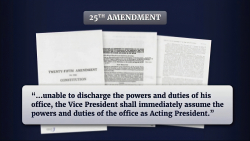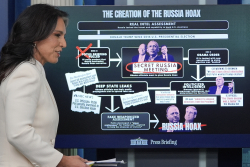While short-lived, the Barracuda class served as a critical stepping stone in the evolution of ASW capabilities, demonstrating the importance of advanced sonar systems and stealth in underwater operations.
The SS-551 Barracuda-class submarine represented a unique chapter in the history of the United States Navy’s submarine development. Originally designated as the K-class and later reclassified as Barracuda-class, these submarines were designed in the early post-World War II-era as experimental hunter-killer vessels (SSK) to counter the growing threat of Soviet submarines during the early Cold War.
The Barracuda-class—which includes the USS Barracuda (SSK-1), the USS Bass (SSK-2, later SS-551), and the USS Bonita (SSK-3)—was a specialized group of diesel-electric submarines built to test advanced sonar and anti-submarine warfare (ASW) technologies.
The History of the Barracuda Class
Barracuda-class subs emerged during a transformative period in naval warfare. Following the end of the Second World War and the near-immediate onset of the Cold War, the United States Navy faced new challenges as the Soviet Union expanded its submarine fleet, particularly with diesel-electric submarines capable of operating quietly and posing a significant threat to Western shipping and naval operations.
The advent of the Cold War heightened concerns about Soviet submarine incursions—especially in the Atlantic, where NATO forces needed to protect vital sea lanes. The Navy recognized the need for specialized submarines optimized for ASW, leading to the development of the SSK concept. In the late 1940s, the US Navy initiated the Barracuda-class program to create a small, agile, and cost-effective platform equipped with advanced sonar systems to detect and destroy enemy submarines.
Unlike the larger fleet submarines of WWII, such as the Gato- or Balao-class, the Barracuda-class was designed for a niche role: to patrol coastal waters and choke points, using passive sonar to locate and engage Soviet submarines. The program was part of a broader effort to modernize the Navy’s submarine force in response to evolving geopolitical and technological realities.
The Barracuda Submarine’s Specifications
The Barracuda-class subs were relatively small compared to their wartime predecessors, reflecting their specialized mission set. The USS Bass (SS-551), for example, had a displacement of approximately 765 tons and 1,160 tons submerged. These submarines were highly maneuverable and well-suited for operations in littoral waters, where larger submarines might struggle.
Powered by a diesel-electric propulsion system—a standard configuration for American submarines before the widespread adoption of nuclear-powered ships in the 1950s—each sub was equipped with three General Motors diesel engines and two electric motors, driving a single shaft. This system provided a maximum speed of approximately 13 knots (15 miles per hour) surfaced and 8.5 knots (9.8 mph) when submerged. These speeds, while unremarkable when compared to nuclear-powered submarines, were excellent for that era and made it a perfect predator for the slower Soviet subs.
Barracuda’s sonar suite was also among the most sophisticated of its era. The BQR-4 passive sonar system, a large bow-mounted array designed to detect the acoustic signatures of enemy submarines at long ranges, was the defining feature of the Barracuda-class sub. This system allowed the Barracuda-class to operate in a “silent” mode, relying on passive sonar to avoid detection while tracking targets. The emphasis on passive sonar reflected the Navy’s recognition that stealth and detection were critical in anti-submarine warfare.
Armament on the Barracuda-class was relatively light, as the submarines were not designed for surface engagements or multi-role missions. Each submarine carried four 21-inch torpedo tubes in the bow, with a capacity for 16 torpedoes, typically the Mark 16 or Mark 37 anti-submarine torpedoes. Unlike fleet subs, the Barracudas did not have deck guns or extensive anti-surface capabilities, underscoring its specialized ASW focus.
The Barracuda-class submarines were manned by a crew of approximately 37 officers and enlisted personnel, a smaller complement than larger fleet subs. The compact design prioritized space for sonar equipment and machinery, resulting in cramped living conditions for the crew.
Habitability was a challenge, as was common in diesel-electric subs of the era, with limited space for storage, recreation, or personal comfort. Crew endurance was further constrained by the need for frequent surfacing to recharge batteries and ventilate the submarine, a limitation that would later be overcome by nuclear-powered designs.
The Barracuda-Class Submarines Had a Short Service Life
Barracuda-class submarines had a relatively short operational history, spanning the 1950s before the submarines were overtaken by technological advancements. During their active service, the submarines participated in ASW exercises and training missions, primarily along the US coast and in the Atlantic.
Their advanced sonar systems were tested extensively, providing valuable data on passive detection techniques and submarine tactics. The Barracuda-class submarines also served as testbeds for new ASW technologies, contributing to the development of later submarine classes.
By the late 1950s, the Barracuda-class submarines were deemed surplus requirements. The USS Barracuda was decommissioned in 1957, followed by the USS Bass on October 1, 1957 and the USS Bonita in 1959. In 1959, the Navy reclassified the submarines from SSK to SS designations, with USS Bass receiving the hull number SS-551.
After decommissioning, the submarines were placed in reserve and later struck from the Naval Register in the mid-1960s. The USS Bass was sold for scrap in 1965 to Nassco in Terminal Island, California, while the other two submarines eventually met similar fates.
While short-lived, the class served as a critical stepping stone in the evolution of ASW capabilities, demonstrating the importance of advanced sonar systems and stealth in underwater operations. The lessons learned from the Barracuda class informed the development of subsequent submarine classes, including the Tang-class and the nuclear-powered Skipjack– and currently-serving Virginia-class submarines.
About the Author: Brandon J. Weichert
Brandon J. Weichert, a Senior National Security Editor at The National Interest as well as a contributor at Popular Mechanics, who consults regularly with various government institutions and private organizations on geopolitical issues. Weichert’s writings have appeared in multiple publications, including the Washington Times, National Review, The American Spectator, MSN, the Asia Times, and countless others. His books include Winning Space: How America Remains a Superpower, Biohacked: China’s Race to Control Life, and The Shadow War: Iran’s Quest for Supremacy. His newest book, A Disaster of Our Own Making: How the West Lost Ukraine is available for purchase wherever books are sold. He can be followed via Twitter @WeTheBrandon.
Image: Wikimedia Commons.















